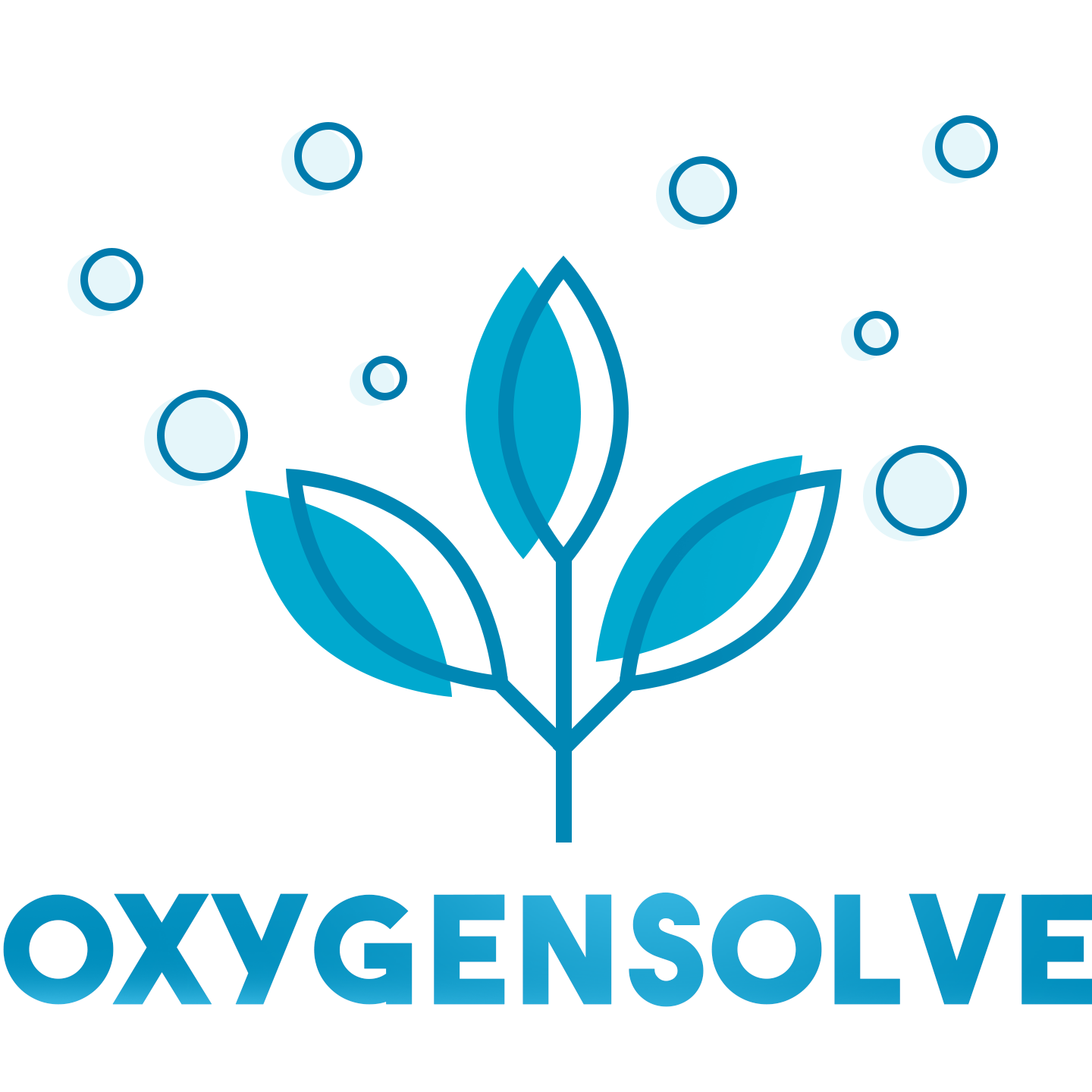What is the difference between CPAP and BiPAP? Sleep apnea treatments explained
CODE
Machines like CPAP machine and BiPAP machine use pressurized air to treat sleep apnea, where breathing pauses or weakens during sleep. Both use masks and hoses, but they differ in how they deliver air. CPAP gives a steady stream of air, while BiPAP provides two pressures, one for inhaling and another for exhaling.
For sleep apnea, using a PAP machine every night can improve your breathing and sleep. Understanding the difference between CPAP and BiPAP can help you choose the right treatment and get the most out of it.
At Oxygensolve, we understand the importance of choosing the right sleep therapy solution. This informative blog delves into the key differences between CPAP and BiPAP machines, empowering you to make informed decisions for a better night's sleep.
Understanding Sleep Apnea
Before diving into the specifics of CPAP machine vs. BiPAP machine, let's establish a common ground: sleep apnea. This sleep disorder causes breathing to repeatedly stop and start throughout the night. There are three main types of sleep apnea:

- Obstructive Sleep Apnea (OSA): The most common type, OSA occurs when the upper airway narrows or collapses during sleep, blocking airflow.
- Central Sleep Apnea: This type is caused by the brain failing to send signals to the muscles that control breathing.
- Mixed Sleep Apnea: A combination of both obstructive and central sleep apnea.
Sleep apnea symptoms include loud snoring, gasping for air during sleep, daytime fatigue, and difficulty concentrating. Left untreated, sleep apnea can increase the risk of serious health problems like heart disease, stroke, and high blood pressure.
What are CPAP Machines?
CPAP (Continuous Positive Airway Pressure) therapy is the gold standard treatment for mild to moderate obstructive sleep apnea. A CPAP machine delivers a constant stream of pressurized air through a mask to keep your airway open during sleep. This airflow prevents airway collapse and ensures uninterrupted breathing throughout the night.
Key Features of CPAP Machines
- Constant Air Pressure: CPAP machines deliver a single, fixed pressure setting throughout the inhalation and exhalation cycles.
- Simpler Design: CPAP machines are generally less complex than BiPAP machines, making them easier to use and maintain.
- Wide Availability: CPAP therapy is a well-established treatment, and CPAP machines are widely available from durable medical equipment (DME) providers like Oxygensolve.
Drawbacks of CPAP Machine
- Pressure Discomfort: Some users experience initial discomfort adjusting to the constant airflow pressure.
- Mask Leak: Leaks around the mask can disrupt therapy and reduce its effectiveness.
- Claustrophobia: The mask and headgear might feel confining for users with claustrophobic tendencies.
Who is a CPAP Machine Suitable For?
CPAP therapy is most effective for individuals with mild to moderate obstructive sleep apnea. It's often the first-line treatment option due to its simplicity and effectiveness.
What are BiPAP Machines?
BiPAP (Bi-Level Positive Airway Pressure) therapy offers a more tailored approach to sleep apnea treatment. Unlike CPAP, BiPAP machines deliver two distinct pressure levels:
- Higher Pressure for Inhalation: This pressure assists the lungs in expanding during inhalation, ensuring sufficient oxygen intake.
- Lower Pressure for Exhalation: This pressure facilitates easier exhalation, improving comfort for some users who find CPAP therapy difficult to tolerate.
Key Features of BiPAP Machines
- Dual Pressure Settings: BiPAP machines provide separate pressure settings for inhalation and exhalation, offering more flexibility in treatment.
- More Complex Design: BiPAP machines incorporate additional features and require more specific settings compared to CPAP.
- Targeted Therapy: BiPAP therapy addresses specific breathing difficulties, making it suitable for complex sleep apnea cases.
Drawbacks of BiPAP Machine
- Increased Complexity: Setting up and using BiPAP machines requires more guidance due to the additional pressure settings.
- Higher Noise Level: BiPAP machines can be slightly noisier than CPAP machines due to the dual pressure operation.
Determining BiPAP Pressure Levels
BiPAP therapy involves setting two distinct pressure levels:
- Inhalation (IPAP): This pressure assists your lungs in expanding during inhalation, ensuring sufficient oxygen intake.
- Exhalation (EPAP): This pressure facilitates easier exhalation, improving comfort and compliance with therapy.
Who is a BiPAP Machine Suitable For?
BiPAP therapy is often recommended for individuals with:
- Severe Obstructive Sleep Apnea: When CPAP therapy proves ineffective in treating severe OSA.
- Medical Conditions Affecting Breathing: BiPAP therapy can be beneficial for those with underlying conditions that weaken respiratory muscles or limit lung capacity.
Choosing Between CPAP and BiPAP Machines
The decision between CPAP and BiPAP therapy should be made in consultation with a sleep specialist. They will conduct a sleep study to evaluate your specific needs and recommend the most suitable treatment option. Here's a general guideline:
- Start with CPAP: For most individuals with mild to moderate OSA, CPAP therapy is a successful and well-tolerated treatment option.
- Consider BiPAP: If CPAP therapy proves ineffective due to severe sleep apnea, discomfort, or underlying medical conditions, your doctor might recommend BiPAP therapy.
Importance of Sleep Study for Optimal Pressure Settings

A sleep study is crucial for determining the appropriate pressure settings for both CPAP and BiPAP therapy. During a sleep study, technicians monitor your breathing patterns, oxygen levels, and brain activity while you sleep. This data helps identify the minimum pressure required to keep your airway open throughout the night.
Technician Monitoring Breathing, Oxygen Levels, and Brain Activity
Sleep studies typically involve overnight monitoring in a sleep lab. Technicians track various physiological parameters, including:
- Electroencephalogram (EEG): Measures brain wave activity to assess sleep stages.
- Electromyography (EMG): Records muscle activity, including those involved in breathing.
- Electrooculogram (EOG): Measures eye movements to determine sleep stages.
- Pulse Oximetry: Monitors blood oxygen levels.
- Respiratory Effort Sensors: Track chest and abdominal movements to assess breathing patterns.
Auto-adjusting BiPAP Machines and Initial Pressure Settings
Some BiPAP machines are auto-adjusting (BiPAP Auto) and can automatically adjust the EPAP within a pre-set range based on your breathing needs throughout the night. However, a sleep study is still necessary to determine the initial pressure settings and ensure the BiPAP Auto functions effectively.
Re-evaluation of Treatment Plan Based on Symptom Changes or Health Updates
If you experience persistent sleep apnea symptoms despite treatment, or if your health condition changes, it's crucial to consult your doctor. They may need to re-evaluate your sleep study results and adjust your treatment plan accordingly. This might involve switching from CPAP to BiPAP or exploring alternative therapies.
Table of Comparison: CPAP vs. BiPAP Machine
| Feature | CPAP Machine | BiPAP Machine |
|---|---|---|
| Product image |  |
 |
| Treatment Focus | Mild to moderate OSA | Severe OSA, complex respiratory conditions |
| Comfort | May be uncomfortable | Can be more comfortable for some due to adjustable exhalation pressure |
| Complexity | Simpler design | More complex design, requires specific settings |
| Cost | $859.00 | $1,099.00 |
| Portability | Generally more portable | Less portable due to bulkier size |
| Prescription Requirement | Requires prescription | Requires prescription |
Frequently Asked Questions About BiPAP vs. CPAP
-
CPAP vs. APAP (Auto-Adjusting Positive Airway Pressure):
- Both CPAP and APAP machines deliver continuous positive airway pressure.
- However, CPAP uses a single, fixed pressure setting, while APAP automatically adjusts the pressure within a pre-set range throughout the night.
- APAP therapy may be suitable for individuals with mild sleep apnea where breathing pressure needs vary slightly.
-
Cost Comparison Between BiPAP and CPAP Machines:
- BiPAP machines are generally more expensive than CPAP machines due to their additional features and potential need for specialized settings.
- Prescription Requirement for BiPAP Machines:
- Both CPAP and BiPAP machines require a prescription from a doctor or sleep specialist.
-
Pressure Ramp Feature on BiPAP Machines:
- Some BiPAP machines offer a pressure ramp feature that gradually increases the pressure from a lower setting to the prescribed IPAP level at the beginning of inhalation. This can improve comfort by easing users into therapy.

-
Monitoring CPAP and BiPAP Therapy Effectiveness:
- Monitoring CPAP and BiPAP therapy effectiveness involves tracking how well the machine keeps your airway open throughout the night.
- Doctors may use data from the machine itself or recommend a follow-up sleep study to assess treatment success.
Oxygensolve: Your Partner for Optimal Sleep Solutions
At Oxygensolve, we understand the nightly struggles of sleep apnea. That's why we're dedicated to providing comprehensive solutions to help you breathe easier and achieve a restful night's sleep. We offer a wide range of CPAP and BiPAP machines from leading manufacturers, ensuring you have access to the latest technology for optimal sleep therapy.
Our knowledgeable staff can help you navigate the differences between CPAP and BiPAP machines and find the perfect fit for your individual needs. Don't let sleep apnea disrupt your life any longer. Contact Oxygensolve today and experience the difference a good night's sleep can make!
Key Takeaways:
- CPAP machine uses constant air pressure to keep airways open, good for regular sleep apnea.
- BiPAP machine offers two pressures for more complex sleep apnea or those who have trouble exhaling with CPAP.
- A doctor will recommend the best PAP therapy for your specific needs.
Conclusion
Understanding the differences between CPAP machine and BiPAP machines empowers you to participate actively in discussions about your sleep apnea treatment plan. Remember, a doctor or sleep specialist is the best resource to guide you towards optimal sleep therapy for a healthier and more restful night's sleep.
If you suspect you have sleep apnea, it's crucial to seek professional help. Early diagnosis and treatment can significantly improve your sleep quality, overall health, and well-being. A sleep test might be the next step to receive a proper diagnosis and discuss potential treatment options with your doctor.
Get a restful night's sleep you deserve. Schedule a consultation with our sleep specialists and explore our selection of CPAP machine and BiPAP machines to find the perfect solution for your sleep apnea.
Let Oxygensolve be your partner in achieving a good night's sleep and a healthier you!























